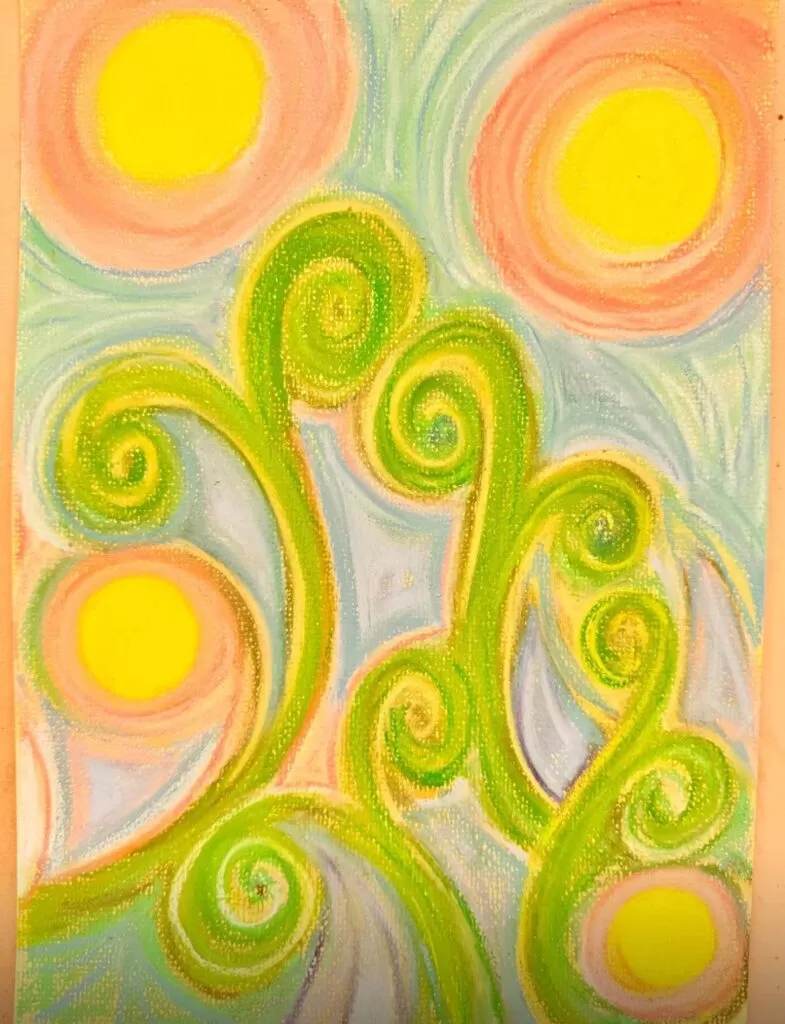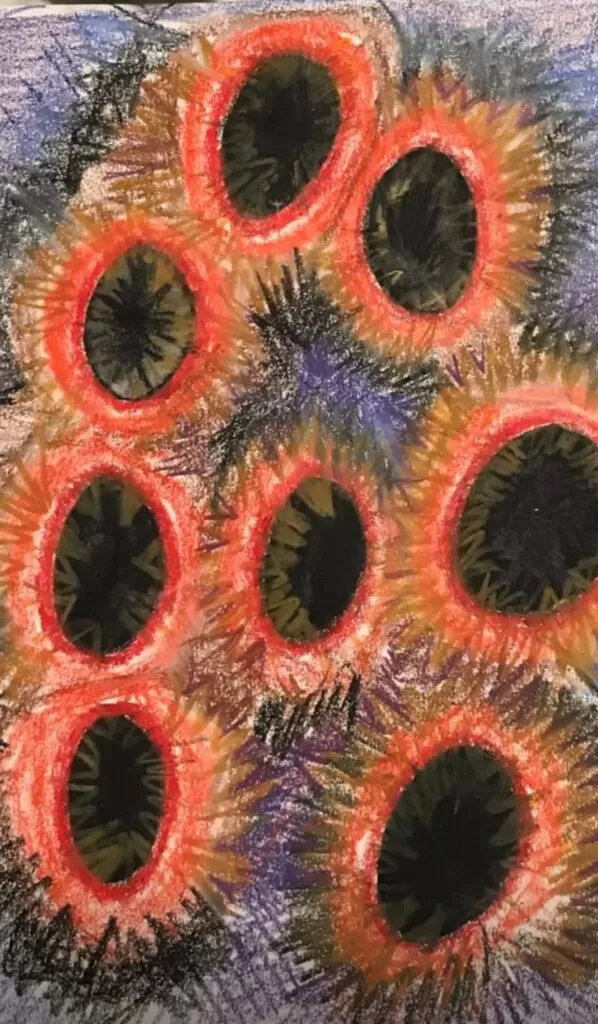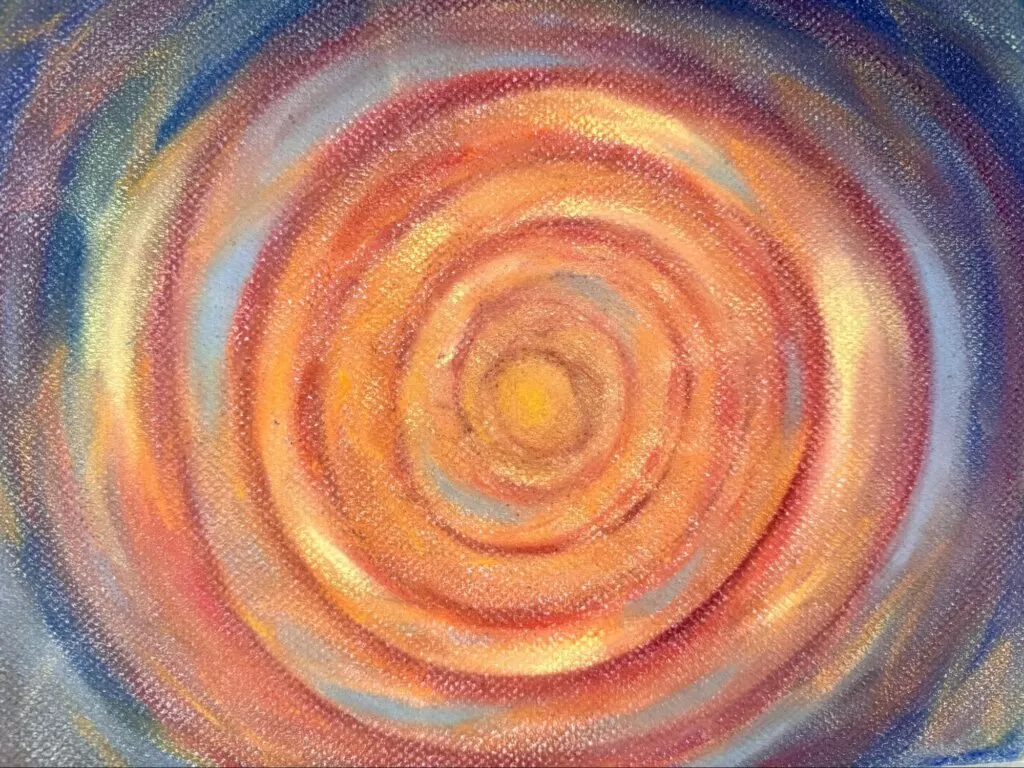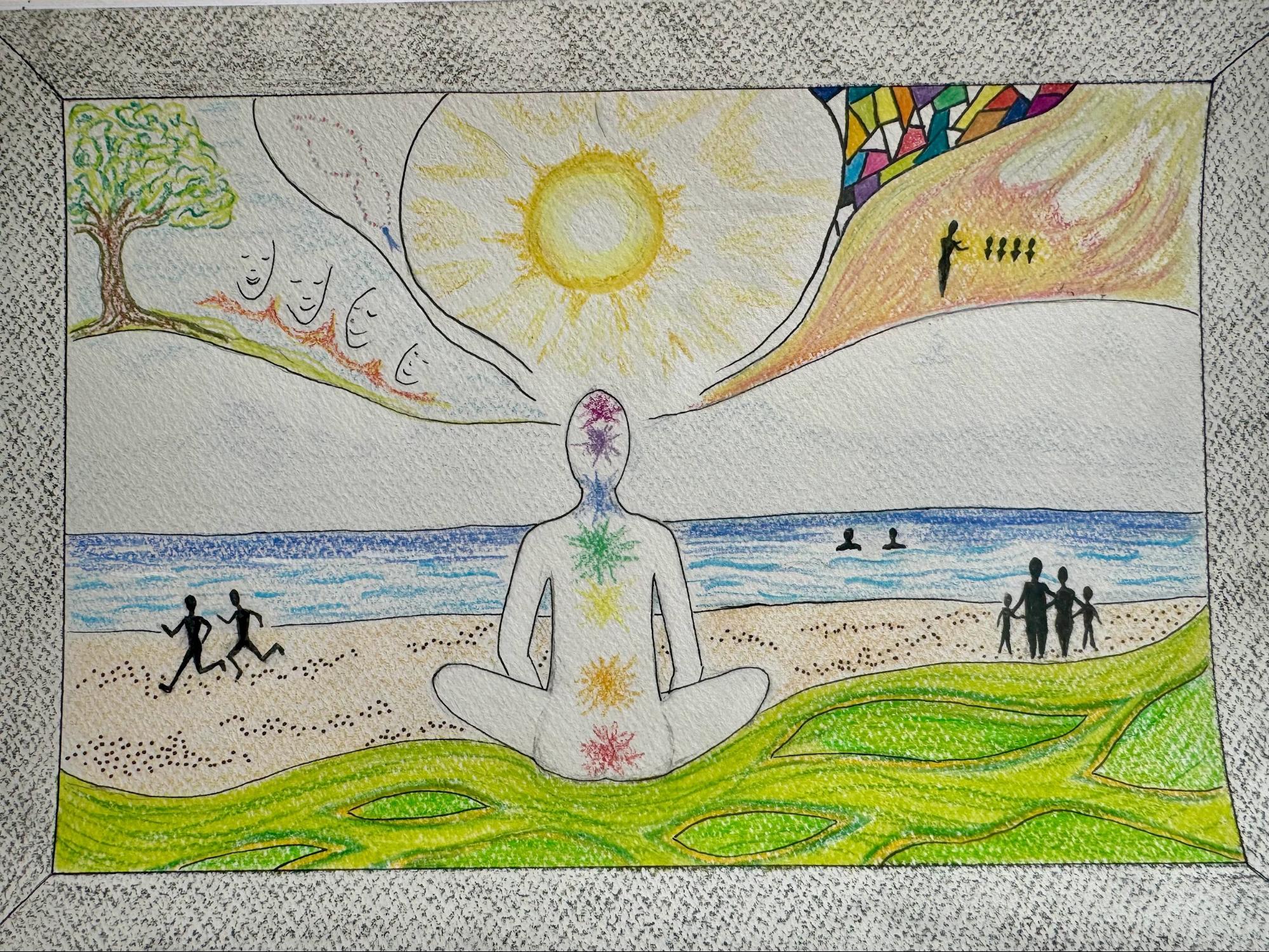Understanding Art Therapy: How Creativity Heals
Art has always been a way for people to express themselves and process emotions. Whether it’s doodling in the margins of a notebook, painting on a canvas, or shaping clay with your hands, creativity has a way of bringing relief and clarity. But art therapy takes that creative process a step further—using it as a purposeful and guided tool for emotional healing.
Maybe you’ve felt a sense of calm after drawing or lost yourself in the rhythm of painting. That’s just a small glimpse of what art therapy can offer. But what exactly is art therapy? How does it work? And could it be the right fit for you or someone you love?
This blog will explore:
- The science behind art therapy and how creativity supports mental health
- How art therapy differs from traditional talk therapy
- Who can benefit from art therapy
- A brief history of art therapy and how it has evolved
- How art therapy and counselling work together to support healing
What Is Art Therapy and How Does It Work?
Art therapy is a form of psychotherapy that helps people process emotions, relieve stress, and explore personal challenges through creativity. Unlike traditional talk therapy, it doesn’t rely on words, it allows expression through art instead.
How It Works:
- A trained art therapist guides individuals through creative activities like drawing, painting, collage, sculpting, or even digital media.
- Sessions can be structured (with specific prompts) or open-ended, allowing for free expression.
- The focus is on the process, not the final product—there’s no need to be “good” at art.
- The therapist helps explore the meaning behind the artwork, uncovering emotions or patterns that might be difficult to express verbally.
A Holistic Approach to Healing
One of the best things about art therapy is that it supports healing on multiple levels. Rather than focusing only on thoughts or emotions, it integrates mental, emotional, and even physical well-being.
Through art therapy, people can:
- Engage the mind and emotions through creative expression.
- Reduce stress and anxiety by activating relaxation responses in the brain.
- Increase self-awareness, helping to process and understand emotions more deeply.
For those dealing with trauma, grief, or emotional roadblocks, this approach provides a gentle and non-threatening way to reconnect with themselves.



The Science Behind Art Therapy: How Creativity Heals
There’s solid neuroscience behind why art therapy works.
Engaging in creative expression:
- Activates both sides of the brain, allowing emotions to be processed in new ways.
- Lowers cortisol levels (the stress hormone), promoting relaxation.
- Helps process trauma non-verbally, which can be especially helpful for those who find traditional talk therapy overwhelming.
- Encourages neuroplasticity, helping the brain rewire and form healthier thought patterns.
For people struggling with anxiety, depression, PTSD, or grief, art therapy provides an alternative way to process emotions—without the pressure of finding the right words.
Art Therapy vs. Traditional Therapy
Both traditional therapy and art therapy are valuable, but they offer different ways of processing emotions and experiences.
Traditional Talk Therapy
- Verbal Expression: Focuses on talking through thoughts and feelings.
- Structured Methods: Often uses techniques like Cognitive Behavioural Therapy (CBT) to reframe negative thoughts.
- Ideal for: Those comfortable expressing emotions through words.
Art Therapy
- Non-Verbal Expression: Uses art as a way to explore emotions without needing to verbalize them.
- Creative Exploration: Encourages self-discovery and emotional reflection.
- Ideal for: People who struggle to articulate their emotions or prefer visual communication.
For some, a combination of both methods works best—talk therapy for structured guidance and art therapy for deeper emotional expression.

Who Can Benefit from Art Therapy?
The beauty of art therapy is that it’s for everyone, regardless of age or artistic ability.
Here’s how it can help different groups:
Children
- Provides a safe space for emotional expression.
- Helps with emotional regulation and developing coping skills.
- Enhances communication and social development.
Teens
- Supports identity exploration and self-confidence.
- Helps manage stress and anxiety related to school and social pressures.
- Provides a creative outlet for processing intense emotions.
Adults
- Reduces stress and promotes relaxation.
- Helps with grief, trauma, and life transitions.
- Encourages self-reflection and personal growth.
Older Adults
- Supports cognitive function and memory retention.
- Reduces feelings of isolation and depression.
- Encourages social connection and emotional well-being.
If you or someone you know finds it hard to express emotions, manage stress, or cope with trauma, art therapy could be a powerful tool for healing.
A Brief History of Art Therapy
People have used art for healing for centuries. Ancient civilizations and Indigenous cultures incorporated creative expression into rituals, storytelling, and community healing.
In the 20th century, psychologists like Margaret Naumburg and Edith Kramer helped establish art therapy as a recognized mental health practice. Today, it’s used in:
- Hospitals and mental health clinics
- Schools and special education programs
- Trauma recovery centers
- Private therapy practices
Final Thoughts: Is Art Therapy Right for You?
Art therapy isn’t about making “good” art, it’s about using creativity for emotional healing. Whether you’re dealing with anxiety, stress, grief, or big life changes, creative expression can be transformative.
If you’re curious about trying art therapy, consider:
- Reaching out to a trained art therapist.
- Joining a creative workshop or group program.
- Simply explore art on your own—without judgment or expectation.
At Creative Journeys, I offer:
- 1:1 art therapy counselling sessions
- Workshops and group programmes
- Support for children, teens, and adults
If you’re ready to begin your journey, feel free to reach out or visit creativejourneys.com.au to learn more about how art can be a powerful tool for emotional well-being. No artistic skill is needed, just an open mind and a willingness to explore!





Become our affiliate and watch your wallet grow—apply now! https://shorturl.fm/fpzyf
Start profiting from your traffic—sign up today! https://shorturl.fm/hCQXU
Partner with us for generous payouts—sign up today! https://shorturl.fm/c1UPp
Become our partner now and start turning referrals into revenue! https://shorturl.fm/RGs76
Start earning instantly—become our affiliate and earn on every sale! https://shorturl.fm/GP6SW
Share your link, earn rewards—sign up for our affiliate program! https://shorturl.fm/0qahU
Boost your profits with our affiliate program—apply today! https://shorturl.fm/TSPhR
Start sharing, start earning—become our affiliate today! https://shorturl.fm/3eJWv
Earn passive income with every click—sign up today! https://shorturl.fm/zZypM
Refer friends and colleagues—get paid for every signup! https://shorturl.fm/e4eGe
Boost your income effortlessly—join our affiliate network now! https://shorturl.fm/s3uAs
Promote our brand and watch your income grow—join today! https://shorturl.fm/WPaR3
Earn recurring commissions with each referral—enroll today! https://shorturl.fm/vZ29k
Turn referrals into revenue—sign up for our affiliate program today! https://shorturl.fm/h6yTH
Join our affiliate community and start earning instantly! https://shorturl.fm/fwsmz
Drive sales, earn commissions—apply now! https://shorturl.fm/yTuSZ
Unlock exclusive rewards with every referral—apply to our affiliate program now! https://shorturl.fm/7J2od
Drive sales, earn commissions—apply now! https://shorturl.fm/SZfXa
Share your unique link and earn up to 40% commission! https://shorturl.fm/85xdL
Turn referrals into revenue—sign up for our affiliate program today! https://shorturl.fm/nHJpB
Apply now and receive dedicated support for affiliates! https://shorturl.fm/hz6rS
Monetize your influence—become an affiliate today! https://shorturl.fm/en1CK
Get paid for every click—join our affiliate network now! https://shorturl.fm/cXidx
Онлайн-детский психолог онлайн отзывы поможет справиться с кризисом.
Получите поддержку!
Maximize your earnings with top-tier offers—apply now! https://shorturl.fm/hpbYW
Promote our brand and get paid—enroll in our affiliate program! https://shorturl.fm/k3YgA
Tap into unlimited earnings—sign up for our affiliate program! https://shorturl.fm/VUhIW
Join our affiliate family and watch your profits soar—sign up today! https://shorturl.fm/qdwlc
Sign up for our affiliate program and watch your earnings grow! https://shorturl.fm/1OAgE
Start profiting from your network—sign up today! https://shorturl.fm/3GQTY
Start profiting from your traffic—sign up today! https://shorturl.fm/zA8On
Promote our products and earn real money—apply today! https://shorturl.fm/7nfgT
Join our affiliate program today and start earning up to 30% commission—sign up now! https://shorturl.fm/n5ovP
Join our affiliate community and maximize your profits! https://shorturl.fm/01O0H
Start sharing our link and start earning today! https://shorturl.fm/Jldon
Вывод на Piastrix — быстро и без комиссий.
5ac.ru
Drive sales, earn big—enroll in our affiliate program! https://shorturl.fm/axh0v
Казино Лев — топ для тех, кто любит азарт.
вулкан Лев
Live-шоу с дилерами — это как кино, затягивает!
казино Лев
Join our affiliate program and start earning commissions today—sign up now! https://shorturl.fm/Nk2N5
Start earning on every sale—become our affiliate partner today! https://shorturl.fm/96JLO
Get rewarded for every recommendation—join our affiliate network! https://shorturl.fm/z0WKK
Казино Лев — место, где можно выиграть и расслабиться!
игорный клуб Лев
Share your link and rake in rewards—join our affiliate team! https://shorturl.fm/HfZxw
Промокоды в Telegram-боте — постоянно
что-то новенькое.
detskie-peregorodki.ru
FlyX ensures brand messages hit home, just as
a well-timed campaign slogan does.
Albert Valiakhmetov
Share our products and watch your earnings grow—join our affiliate program! https://shorturl.fm/yZvkE
Share our link, earn real money—signup for our affiliate program! https://shorturl.fm/qvoKL
Be rewarded for every click—join our affiliate program today! https://shorturl.fm/LbYtm
Become our partner and turn clicks into cash—join the affiliate program today! https://shorturl.fm/SNzHK
Maximize your earnings with top-tier offers—apply now! https://shorturl.fm/y26wn
Monetize your traffic instantly—enroll in our affiliate network! https://shorturl.fm/fS2VW
https://shorturl.fm/AmtHQ
https://shorturl.fm/Oh8so
https://shorturl.fm/j5hXP
https://shorturl.fm/hYmTk
https://shorturl.fm/d2Odg
https://shorturl.fm/bNIFR
https://shorturl.fm/dX91p
Dallmayr Prodomo в Минске – где найти оригинал, а не подделку?
свежеобжаренный кофе купить
https://shorturl.fm/Lr4P9
https://shorturl.fm/PKY4a
https://shorturl.fm/JGGoi
https://shorturl.fm/kPolq
https://shorturl.fm/w4nFV
https://shorturl.fm/F6OuI
https://shorturl.fm/XOXFL
https://shorturl.fm/27ZAE
https://shorturl.fm/OF4Yh
https://shorturl.fm/P8nh4
https://shorturl.fm/y8FLP
https://shorturl.fm/LrlPU
https://shorturl.fm/w9tRO
Фарш в пицце — теперь готовлю её часто! https://sciencewiki.science/wiki/Dostavka_6L
Мороженое с ягодами — летний десерт
мечты! http://histodata.ch//Weinlager/index.php?title=Dostavka_36b
Мороженое с ягодами — летний десерт мечты! http://histodata.ch//Weinlager/index.php?title=Dostavka_36b
Кофейное печенье по вашему
рецепту — просто тает во рту! http://classicalmusicmp3freedownload.com/ja/index.php?title=Dostavka_12Z
Кофейное печенье по вашему рецепту
— просто тает во рту! http://classicalmusicmp3freedownload.com/ja/index.php?title=Dostavka_12Z
https://shorturl.fm/L133B
https://shorturl.fm/6SlJt
https://shorturl.fm/88REK
https://shorturl.fm/DZT98
https://shorturl.fm/uD2jG
https://shorturl.fm/J6RVB
https://shorturl.fm/ewTno
https://shorturl.fm/Rrhrc
https://shorturl.fm/GzXlX
https://shorturl.fm/p3xBC
https://shorturl.fm/nePFi
https://shorturl.fm/8ZQPE
https://shorturl.fm/2L7yf
https://shorturl.fm/sDFNE
https://shorturl.fm/KD8Xh
https://shorturl.fm/GyMYh
https://shorturl.fm/qzevq
https://shorturl.fm/35S6y
https://shorturl.fm/Wh7uy
https://shorturl.fm/PitMh
https://shorturl.fm/3Fl7Y
https://shorturl.fm/XVgWu
https://shorturl.fm/VMmIA
https://shorturl.fm/AQRtG
https://shorturl.fm/MUSP9
https://shorturl.fm/3mvBX
https://shorturl.fm/fjO90
https://shorturl.fm/Xra0p
https://shorturl.fm/jZuxy
https://shorturl.fm/odTz9